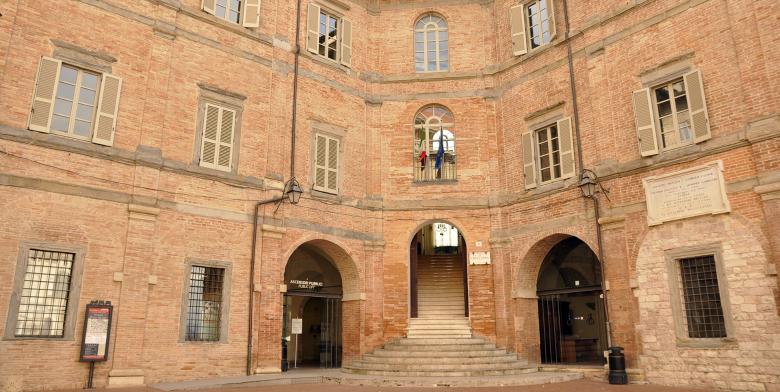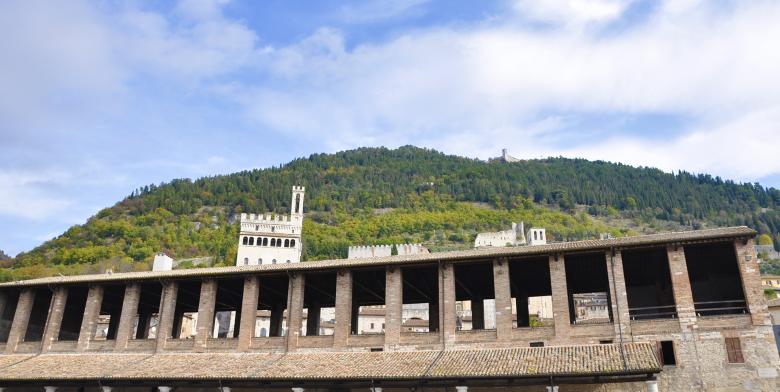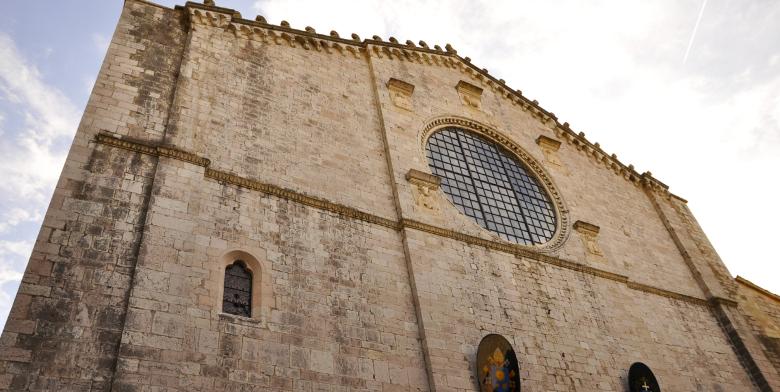A little more upstream, near the porta degli Ortacci, the area now occupied by the 18th century hospital, the church of San Francesco and Piazza Quaranta Martiri, has restored a series of structures with the first building phase going back to the years between the 2nd and 1st centuries B.C., contemporaneous with the planning of the new area which was linked to a thermal installation. Further north, the sector was occupied by a large domus built on a least two levels, with opus signinum and mosaic paving. Underneath Palazzo Vispi and in its immediate vicinity, you can see some structures linked to the remains of a domus with peristalsis and some pillar bases, maybe related to a porticoed road traced out in the direction of the theatre, from which a paved stretch emerged. Further south, amongst the numerous domus, (some which cannot be visited) extended along via Buozzi, the most significant and notable is the so-called "banchetto", due to the presence of a mosaic paved area depicting a "Venere Marina" with a companion or domina, alongside Bacchus pouring wine. The emblem was inserted between the 3rd and the 4th centuries A.D. simultaneously with the restructuration of the house which occurred in the late ancient era. The remains of another domus are visible inside the Antiquarium, mostly constituted of a rich, geometrical mosaic paving in black and white in which a central polychrome, decorative motive was inserted, made up of very tiny mosaic tiles ( vermiculatum technique ) which depicts the episode of the ship of Ulises and Scylla (now in the archaeological museum of Perugia). It can be dated to the end of the 2nd century B.C. and comes from a pictorial model of the Hellenistic age. The theatre (1st century B.C) is located in the centre of Guastuglia and it is one of the most capacious of the time with a diameter of over 70m which could accommodate about 6000 spectators. To the south-west of the theatre, a section of the terracing wall in opus vittatum re-emerged which here delimited the area of the Roman city. A large ceramic outlet (which can be visited on request) has been identified between this area and the church of San Biagio, containing material which can be dated between the archaic era and the end of the 2nd Century B.C. Along Via Ubaldi, you can see the mausoleum, the so-called "di Pomponio Grecino", erroneously attributed to one of the members of an important local senate family, the son of the consul of 16 A.D. Inserted in a small area of the necropolis, the cement hub is conserved, about 9m tall. The monument can be dated to the third quarter of the 1st century B.C. In the archaeological section of the Museo Civico, placed below the palazzo dei Consoli, we can see the sequence of events of the city and of the territory of the proto-historic era to the late medieval era. In the upper room, the Tavole Iguvine are exhibited, a fundamental document of Umbrian language and religious rituals, engraved between the end of the 3rd and the start of the 1st century B.C., and composed of seven bronze tablets found in 1444 near the Roman theatre.
Information and useful advice
To visit the area, please contact the Antiquarium
Via del Teatro Romano
06024 Gubbio
www.archeopg.arti.beniculturali.it


































